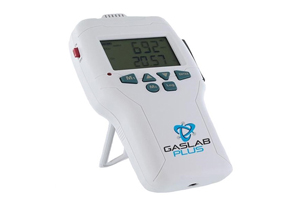CO2 and indoor air quality of Australian offices and schools

Increasingly, modern Australian offices and indoor workspaces are designed to be energy-efficient and comfortable for the people working there. However, well-sealed and insulated buildings can also negatively impact indoor air quality (IAQ) if there isn't enough ventilation. This can seriously affect employees' health, well-being, and productivity. Monitoring and managing IAQ using devices like CO2 meters from Edaphic Scientific is essential to address this issue.
Carbon dioxide (CO2) naturally exists in the atmosphere and is released by humans during respiration. The concentration of CO2 in outdoor areas is around 400 parts per million (ppm). However, the levels can increase rapidly in enclosed s paces such as schools and offices, particularly crowded rooms. High CO2 levels pose a health risk and indicate inadequate ventilation, resulting in the accumulation of other hazardous pollutants.
paces such as schools and offices, particularly crowded rooms. High CO2 levels pose a health risk and indicate inadequate ventilation, resulting in the accumulation of other hazardous pollutants.
Studies have shown that if indoor CO2 levels exceed 1,000 ppm, people may suffer from discomfort and health problems like headaches, fatigue, difficulty breathing, and reduced cognitive abilities. As a result, it's essential to maintain ideal CO2 levels in office spaces to ensure that employees are comfortable and productive.
Australian building standards are also increasing focus and awareness on indoor CO2 levels. Building performance rating tools, such as Green Star and NABERS, specifically require monitoring of CO2 levels to score points. For example, the Green Building Council of Australia scores 1 to 2 points if CO2 levels are maintained below 800ppm or 700ppm, respectively.
Fortunately, technology from Edaphic Scientific can be of assistance. Edaphic Scientific supplies a range of portable, desktop or wall-mounted carbon dioxide monitors suitable for indoor air quality applications. This includes the GasLab Plus meters, the Mini Desktop CO2 Monitor, and the ESTON wall-mounted monitor.
The CO2 monitors supplied by Edaphic Scientific are currently deployed across numerous workplaces in Australia, including high schools in New South Wales, offices in Brisbane, shopping centres in Melbourne, and many more.
To accurately measure the levels of CO2 in the air, CO2 meters utilise non-dispersive infrared (NDIR) sensor technology. By emitting infrared light into a sample of air, the device can determine the concentration of CO2 molecules based on the amount of light absorbed. This information is displayed on a digital readout, allowing individuals to make informed decisions regarding ventilation requirements.
Monitoring CO2 levels continuously can help manage indoor air quality proactively. This enables building managers and office occupants to make the necessary adjustments to the ventilation systems and prevent the buildup of harmful pollutants. Additionally, it ensures compliance with indoor air quality standards and guidelines set by occupational health and safety organisations.
In addition, utilising CO2 meters from Edaphic Scientific can result in considerable energy conservation. Adjusting ventilation according to current IAQ information can prevent excessive ventilation, leading to cost savings and energy reduction. The integration of occupant well-being and energy efficiency highlights the importance of CO2 meters as a crucial component in present-day office settings.
It is crucial to prioritise indoor air quality in office environments. High levels of CO2 can negatively impact the health, comfort, and productivity of occupants. To manage this, CO2 meters from Edaphic Scientific are essential in monitoring indoor air quality. By providing real-time data about CO2 levels, they allow for proactive adjustments to ventilation systems, which can significantly contribute to healthier and more productive office environments. In addition, they can also save energy and costs by preventing excessive ventilation. In today's modern office environment, where employee wellness and sustainability are vital, CO2 meters are an asset that cannot be overlooked.
further reading
- Why do you need to monitor CO2 for IAQ and HVAC?
- Monitoring CO2 in shopping centres
- Emotions in moviegoers and CO2 levels
reference
Indoor air quality in commercial and institutional buildings. Available at: https://www.osha.gov/sites/default/files/publications/3430indoor-air-quality-sm.pdf
Allen JG;MacNaughton P;Satish U;Santanam S;Vallarino J;Spengler JD; Associations of cognitive function scores with carbon dioxide, ventilation, and volatile organic compound exposures in office workers: A Controlled Exposure Study of green and conventional office environments, Environmental health perspectives. Available at: https://pubmed.ncbi.nlm.nih.gov/26502459/
Fisk, W.J. et al. (2013) Is CO2 an indoor pollutant? higher levels of CO2 may diminish decision making performance, ASHRAE JOURNAL. Available at: https://www.osti.gov/biblio/1171812
Juliechao (2015) Elevated indoor carbon dioxide impairs decision-making performance - berkeley lab, Berkeley Lab News Center. Available at: https://newscenter.lbl.gov/2012/10/17/elevated-indoor-carbon-dioxide-impairs-decision-making-performance/

